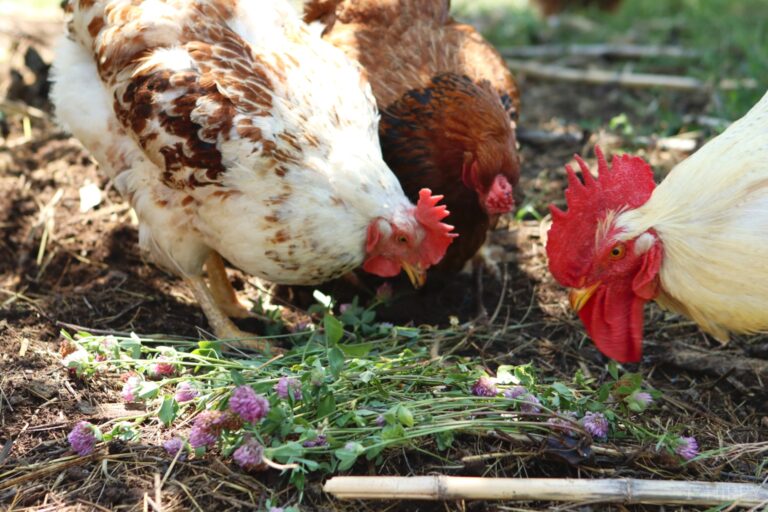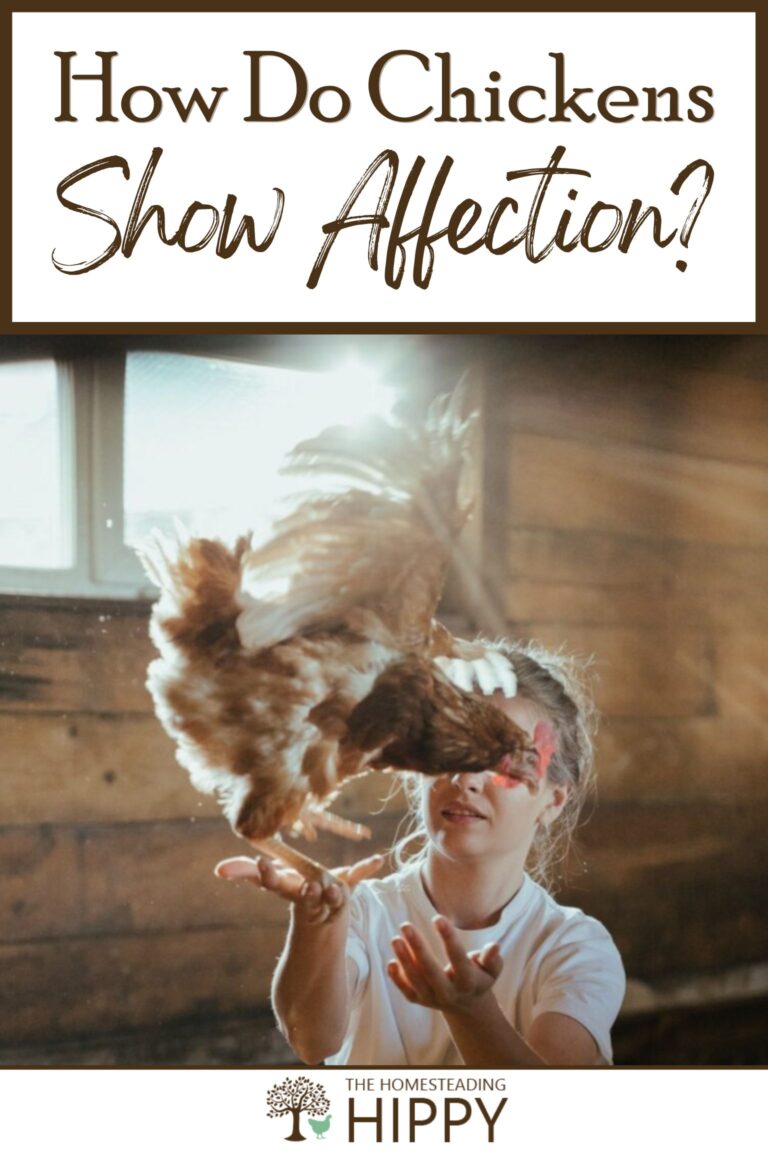Chickens are often seen as simple creatures, but they are actually quite complex and interesting animals. I’m not just referring to their physiology or social behavior, but also their emotions.

Chickens have their own moods and changing attitudes depending on what is going on in their world. Chickens can and will show affection, both to other chickens and to humans.
So, how do chickens show affection?
Chickens show affection to each other by preening, feeding, and roosting together. Chickens show affection to humans by following, sitting with, or near them, and making cooing sounds.
There has been a surprising amount of study done on this topic, and scientists have repeatedly discovered that chickens exhibit fairly strong empathic tendencies among themselves and with people.
It might not look like there is much going on behind those bright eyes, but these birds can grow as attached to you, or a flockmate, the same as other, snugglier animals like cats and dogs.
We’ll tell you all about their affection indicators in the rest of this article.
How Do Chickens Show Affection to One Another?
Chickens show affection to one another in all kinds of ways, and these ways are mostly distinct from how they show affection to humans.
This adds another wrinkle to figuring out how they communicate their feelings, but most of the signs are easy enough to recognize.
1. Preening
One of the most common ways chickens show affection to one another is by preening.
Preening is when a chicken uses its beak to smooth out the feathers of another chicken. Preening also has a social function, as it helps chickens bond with each other.
This behavior can be seen as a way of showing care and concern, as it helps the other chicken to stay clean and healthy.
When two chickens preen each other or preen together, it strengthens their social bond, and makes them more likely to cooperate with each other in the future.
2. Feeding
Eating together or the provision of food always entails a strong social connection, and it is no exception with chickens.
Chickens that make it a point to eat together during feeding time invariably have a better connection than ones that eat whenever and wherever the opportunity presents itself.
Chickens may also feed each other as a way of showing affection. This behavior is usually seen between a mother hen and her chicks, but it can also be seen between two adult chickens that are close.
When a chicken feeds another chicken or shares food, it is giving them the valuable nutrients they need to survive.
This act of generosity creates a strong bond between the two chickens the same as it does with most animals, and can be seen as a way of showing affection.
3. Roosting
Roosting is when chickens sleep perched on a branch or some other elevated surface. Chickens typically roost in groups, and this behavior helps them to stay warm and safe from predators.
Roosting together is also a way for chickens to show affection for one another. When chickens roost together, they are physically close to each other and can feel each other through their feathers or direct contact.
This physical connection improves their bond, and makes them feel safe and secure.
4. Bathing
Chickens usually bathe with dust, which helps them to get rid of parasites and keep their feathers clean.
Chickens may also bathe in water, be it rain or a convenient puddle, when they need to get really clean, though they try to avoid getting soaking wet much of the time.
In either case, chickens that help each other out when bathing or just want to be nearby are showing affection by being involved in the process, or possibly standing guard while their amigo is in a vulnerable position.
How Do Chickens Show Affection to Humans?
Chickens can and will show affection to humans, but it should be noted that not all chickens will do so overtly. It depends on the individual chicken’s personality, as well as its experiences with humans.
Some chickens might be super clingy and love physical contact with their “people” while others might just want to hang out nearby and watch you when you are around. It all depends!
That being said, there are some typical ways that chickens typically show affection to humans.
1. Following
One of the most common and sure signs of affection from a chicken is that they follow you around relentlessly, sometimes even getting underfoot like a cat.
This behavior is called “flocking”, and it is a chicken’s way of showing that they trust you and feel comfortable around you.
When a chicken flocks to you, it is essentially putting itself in your care, and this is a very strong sign of affection.
Sure, it is easy to think they are only doing it because you might have treats on hand, and some do, but most of the time these chickens will lose interest when the food does not materialize. If they are still following you, it is out of love.
2. Sitting With or Near
Plenty of chicken owners will tell you stories of how their favorite chickens are more than happy to sit and while away the day with them given the chance.
Sitting on the porch, in a chair, or even on a swing, chickens that care about you will sometimes want to sit near or even on you. This is a chicken’s way of staying close to you and showing that it cares.
3. Napping
This behavior goes hand in hand, er, wing with the one above. Chickens that are comfortable and affectionate with you might actually fall asleep next to you, or maybe even in your lap.
If this happens, it is a very special moment and definitely means that your chicken trusts you and enjoys your company.
You will probably find that these chickens will single you out for “nap time” whenever you are sitting where they can reach.
For a chicken, what could be better than a nap knowing you are totally protected by your human?
4. Petting
Naturally, chickens typically enjoy contact in the form of gentle petting, and this is a great way to show affection to your chicken.
Chickens typically like to be petted on their heads and necks, and some might even enjoy a back scratch now and then.
If your chicken seems to be particularly enjoying the petting you give out when it runs up to you, it is definitely a sign that it likes you.
5. Cooing
Some chickens, usually hens, make soft cooing or half-clucking “brrr” sounds when they feel affection from their humans, and this is their way of indicating it.
While you might not hear this sound very often, it is a good sign when you do, as it means your chicken feels safe, loved, and content in your presence.

Tom has built and remodeled homes, generated his own electricity, grown his own food and more, all in quest of remaining as independent of society as possible. Now he shares his experiences and hard-earned lessons with readers around the country.
Find out more about the team here.
